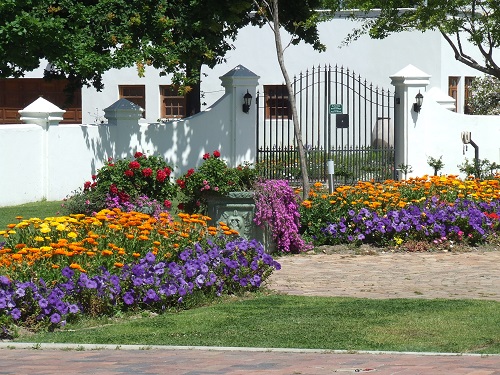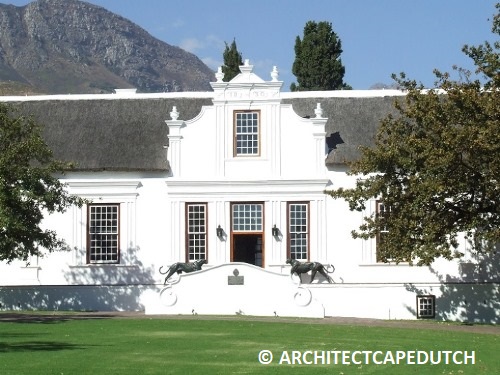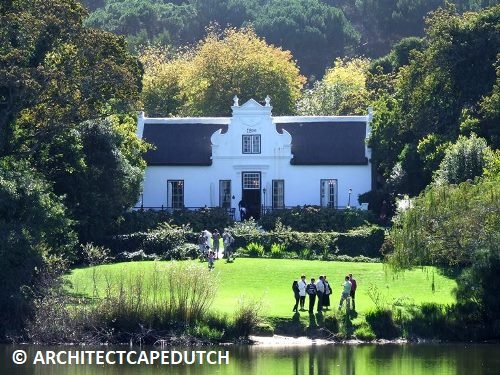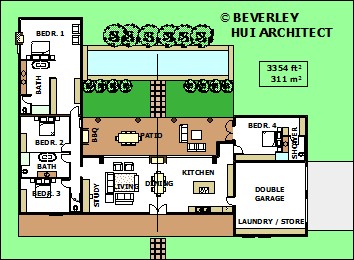1. CASTLE OF GOOD HOPE
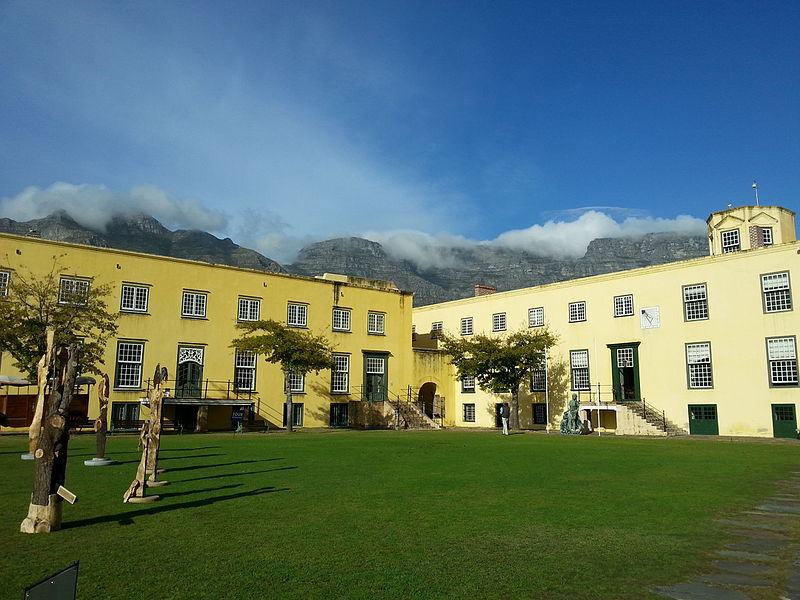
The most well known Cape Dutch building and most accessible to tourists because of its proximity to the city, this magnigicent house does not disappoint. It was home to one of the earliest governers in the Cape colony, and underwent extensive refurbishment after a fire. It is built in a simple Cape flavoured neoclassical style with flat roofs and sliding sash windows with some timber elaborations around main doorways.
For other styles click on ARCHITECTCAPETOWN. The farm was first established in 1685 by Simon van der Stel The plan is in the late Dutch Renaissance style in an irregular u-shape. The house was almost completely ruined by fire in 1925. It was restored by architect Franklin Kendall Arhcitects. The home was made a national monument in 1984.
2. GROOT CONSTANTIA

The most well-known historical site for tourists, the gable is in the Neoclassical style era Cape Dutch. Built by governer Simon van der Stel in 1685 in the same century as the inception of the Cape Colony. For architects designing modern day replicas in this style see ARCHITECTCAPETOWN. Van der Stel chose the land for is superb micro-climate and soils, most suitable for growing wines. The wine from the estate is well-known worldwide and has been saught after in Europe for over 200 years. A fire burnt the home down in 1925, and it was beautiful restored by architect EK. Kendall and his team. The house has since been a Provincial Heritage site and museum.
Visit ARCHITECTCAPETOWN for more on residential architects in the area. in this style.
3. KOOPMANS DE WET HOUSE
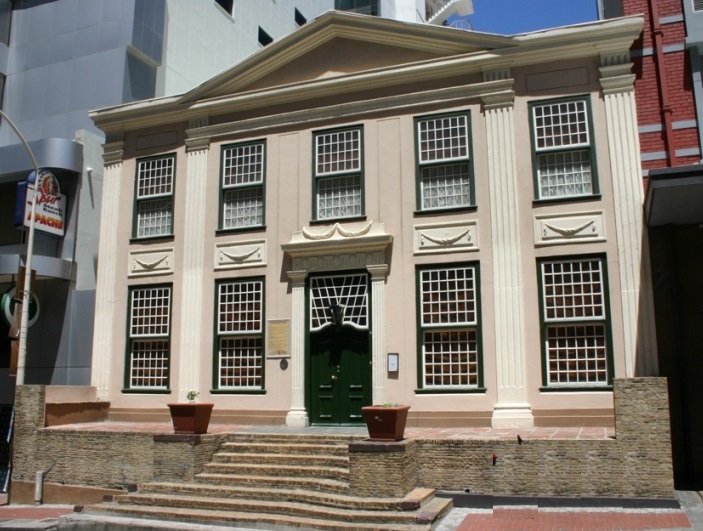
The house acquired it's current form in about 1793, and the most prominent owner was Miemie Koopman's de Wet, who entertained leading politicians at the home including Cecil John Rhodes. It is in the neoclassical style, with sliding-sash windows.
Visit CAPETOWNSPLENDOUR for more on residential architects in the area.
4. GREEN POINT LIGHTHOUSE

This charming red and white lighthouse, is postcard perfect, but is also an operational lighthouses that was first lit as far back as 1824. Located near to the Cape Town soccer stadium and mouille point beaches.
Promoted: See ArchitectCapeTown for modern style architecture.
5. WATERFRONT CLOCK TOWER

This important harbour building was built in the Victorian period in the yar 1882, and now finds itself a key landmark in the bustling V & A waterfront complex. The pointy windows make the building gothic in style, one of the variations of the Victorian style. The tower was painted yellow just for the year 2014 and has been returned to red since.
Promoted: See CAPETOWNSPLENDOUR for more Cape Dutch garden architecture.
6. PARLIAMANT BUILDINGS
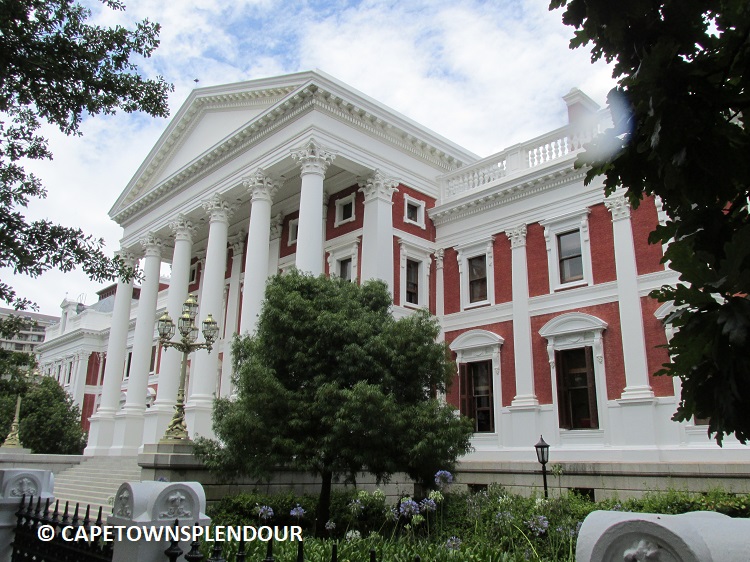
The building was designed in the neoclassical style, but includes some Cape Dutch and Victorian elements and influences. For Cape Vernacular style architecture go to ARCHITECTCAPETOWN. Construction started in 1875 and the building was completed in 1884. It ultimately had three architects: Charles Freeman, Harry Greaves and Sir Herbert Baker. Many of the expensive items from Charles Freeman's original design were not built, such as the dome foutains and Parapets.
Promoted: See CAPETOWNSPLENDOUR for modern Cape Dutch style architecture.
7. TUYNHUIS
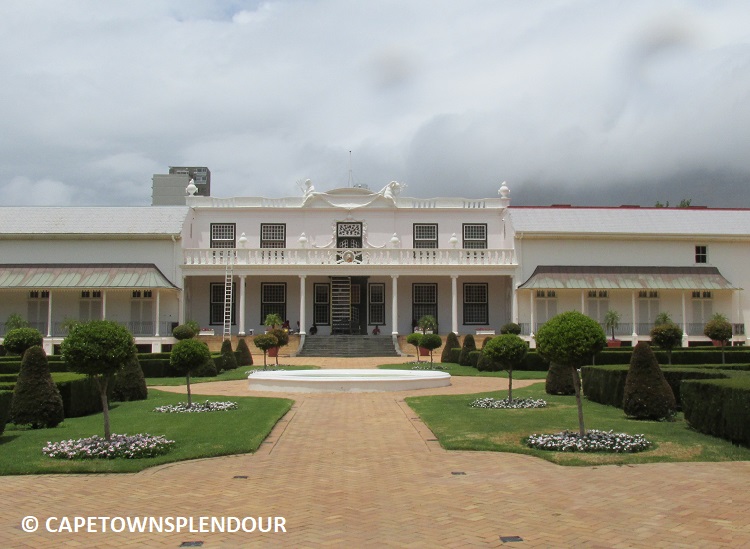
Built in 1682 it is among the oldest historical buildings in Cape Town, although it has undergone a few changes along the years. It was originally built by governer Van der Stel. It has served for many years as the residence of the governer or president, but currently it used a presidential office building.
8. RHODES MEMORIAL
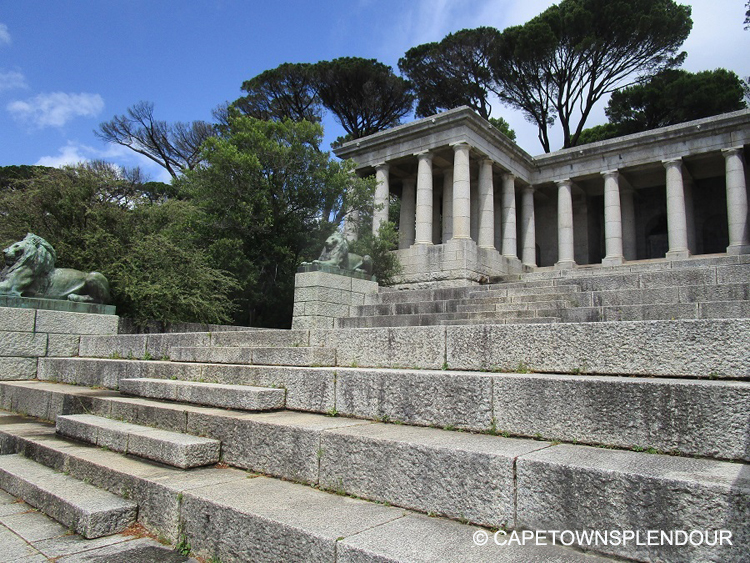
The Rhodes memorial was completed in 1912, two years before the start of the first World War. It was custome built for Cecil John Rhodes, a prominent figure in the history of the Cape Colony, as he was prime minister for 6 years starting in 1890. It was designed by Sir Herbert Baker, a figure equal prominent but in the field of architecture. It is considered to be classical in style making reference to Greek and Roman architecture, with its vast collonaded edge band and porticos. The 8 lion sculptures and the sculpture of Rhodes on horseback decorate the stairway of 49 steps, that has unsurpassed views over the Southern Suburbs, False Bay and Table Bay, as well as the Cape fold mountains and the winelands in the distance.
9. THE BO KAAP MUSEUM
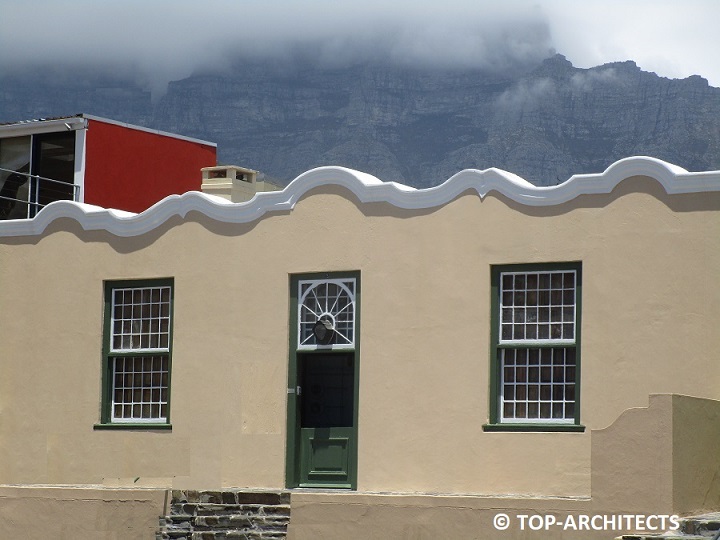
The Malay people came to the Cape often against their will and fought a long struggle to be fully recognised for the great wealth of talent, hard work and dedication that they brought to South Africa. The Bo Kaap Museum records the history of the people, and their contribution in their work, buildings, music and culinary arts.
WINELAND MONUMENTS

THE HUGUENOT MONUMENT
The three arches were completed in 1948 to celebrate the conrtribution of the French settlers in the Cape who came to flee religious persecution in Europe. Many of the farms in the area have French names that were from the original farms alotted to them, even though the language died out as a spoken language soon after the Huguenots arrived.

THE HUGUENOT MEMORIAL
A memorial building was erect just alongside the Huguenot monument to house artefacts left by the French settlers. A perfume museum is the first of its kind in South Africa. Learn about the history of the beautiful town of Franschhoek.

THE HUGUENOT MUSUEUM
Visit this treasure trove of artefacts left by the original settlers to the Cape. New findings are constantly being published from the original source material making this an ongoing research.
Visit ARCHITECTCAPETOWN for another innovative architect in Cape Town. in this style.
STELLENBOSCH TOWN

DORP STREET
This is one of the original roads that was established when the first Town outside of Cape Town was founded. The street is lined with significant heritage buildings mostly in the Cape Dutch and Victorian styles.

THE FAT BUTCHER
This restaurant serves great meals and is located right in the heart of historical Stellenbosch, just adjacent to the botanical gardens in a quait and rustic but well maintained Vicorianised Cape Dutch building. The corrugated iron roof and delicate metalwork on the patio are typical of the period.

DIE MOEDERKERK
The church was built in the 1800's long before the Franschhoek memorial. It had german gothic influences in its design. The steeple rises high above the small town and is an important landmark. Meetings of its Dutch Reformed congregation take place on Sundays and the building is an active part of the life of the town.
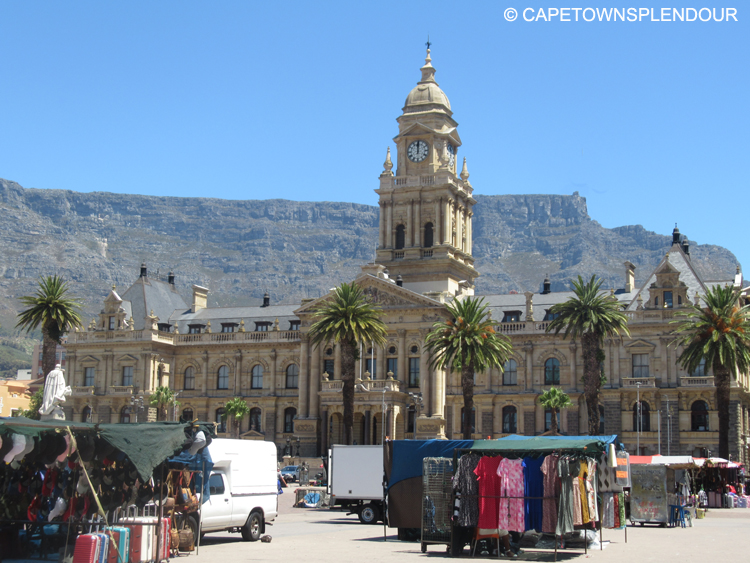
ABOUT THE CITY HALL
Built in 1900, in the Edwardian style which is a type of Victorian style. It was designed by architects Messrs Reid and Frederik Green. It was built of many quality materials imported from Europe including the honey coloured oolitic stone of the entire exterior, which was imported from England.
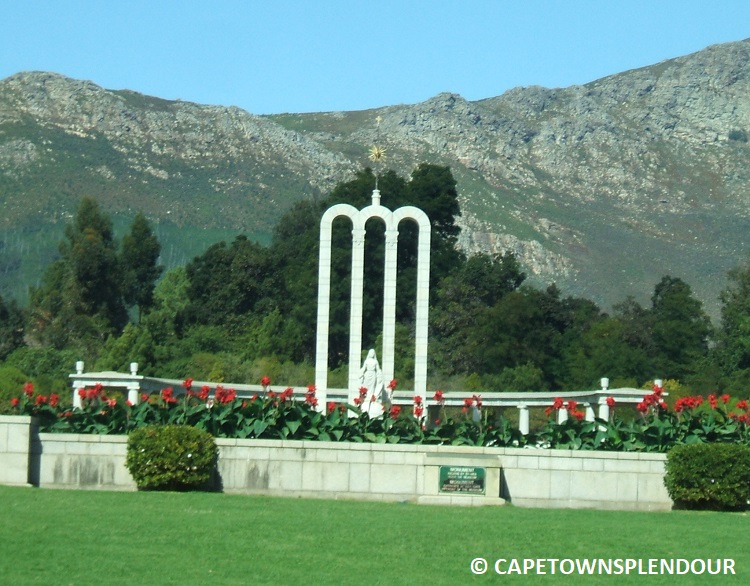
THE HUGUENOT MONUMENT
The monument lies next to the Huguenot museum which is dedicated to the French Huguenots who colonised South Africa in the late 1600's to flee from religious persecution. It was designed by J.C Jongensand consists of three arches that represent the Holy Trinity. It is built of pure stone and was inaugurated in 1948. It is a significant landmark in the Cape Town greater area.
Visit CAPETOWNSPLENDOUR for another innovative architect in Cape Town in this style.
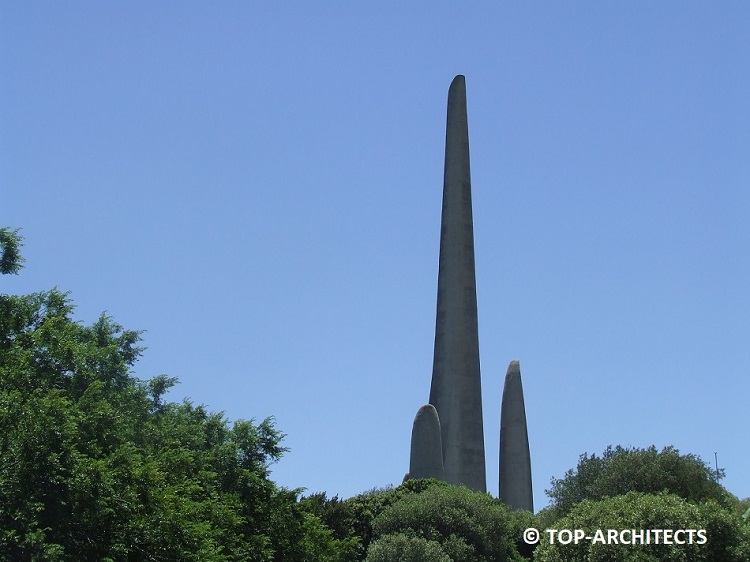
MORE ON THE PAARL LANGUAGE MONUMENT
Situated on a hillock overlooking the town of Paarl, the monument is dedicated to the Afrikaans language in South Africa and the fact that it was declared an official language, and was opened in 1975. It features tapering structures of differing heights that seem to reach for the skies. Visit ARCHITECTCAPETOWN for more pics of modern interiors of Cape Dutch houses.
MORE IN CAPE DUTCH HOUSES >


